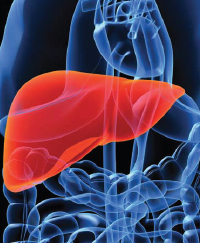The liver is a vital organ in your body. It helps to process nutrients, remove toxins, fight off infections, store energy, and stop bleeding. To allow your liver to keep performing well, you need to protect your liver from the various diseases that can cause liver damage. One of the diseases that may harm your liver is hepatitis.
What is Hepatitis?
Hepatitis is inflammation of the liver, most commonly caused by a viral infection. The six main hepatitis viruses are A, B, C, D, E and G. Hepatitis A, B and C are the most common types of hepatitis diseases. They vary in terms of severity, means of spread, epidemic features, and preventive measures. Hepatitis can cause the liver to swell and lose its ability to function. It can also lead to cirrhosis (scarring), liver failure or even cancer of the liver.
Watch Out for Symptoms of Hepatitis:
- Nausea/vomiting
- Lack of appetite
- Weakness & tiredness
- Fever
- Abdominal pain on the upper right side
- Yellowing of the skin and eyes (jaundice)
- Diarrhoea
- Dark urine
- Light-coloured stools
Hepatitis A
Hepatitis A is a disease that goes away within a few weeks. It rarely leads to permanent liver damage in healthy people. The Hepatitis A virus is found in stools of the infected person.
People most commonly get infected when they consume food or drinks that are contaminated with the infected person’s stool. Lightly cooked seafood like cockles contaminated by faeces or sewage also provides a suitable medium of spread for Hepatitis A.
Hepatitis A in children below 6 years of age usually does not manifest any symptoms. Only 10% of infected children develop jaundice. On the other hand, infection causes clinical disease among older children and adults, with jaundice occurring in more than 70% of cases.
What are the Statistics?
Hepatitis A is widespread in Southeast Asia. In Malaysia, there were 497 cases in 2000, which declined to 107 cases in 2004. This is an indication of improved sanitation, which is the reason why many people do not contract the disease during childhood. However, there is a risk of exposure during adulthood.
Hepatitis B
Hepatitis B can cause chronic liver disease, which is potentially lifethreatening. The chances of Hepatitis B developing into a chronic disease depends on the age at which a person becomes infected. The younger you are, the higher the risk of a chronic infection. Chronic infection occurs in 90% of infants infected at birth, 30% of children infected at age 1-5 years and 6% of people infected after age 5 years. The good news is that Hepatitis B vaccine is in the National Immunisation Schedule since 1989.
What are the Statistics?
In Malaysia, prevalence of hepatitis B is highest among the Chinese community. It is estimated that there are about 1 million Hepatitis B virus (HBV) carriers (5.24% of total population). The carrier rate is highest among Chinese (5-7%), lower in Malays (2-3%) and lowest in Indians (<1%).
| What are the Statistics? | ||
| Hepatitis A | Hepatitis B | |
| Incubation period | 15 to 50 days | 6 weeks to 6 months |
| Means of transmission | Faecal-oral route | Blood or body fluids |
| High risk groups | – People who live with infected people – People who travel to countries with higher prevalence of the infection (poor sanitation) – Children who go to day-care centres – Care-givers at day-care centres – Eating poorly prepared, contaminated food |
– Babies whose mothers are infected – Patients receiving unscreened blood transfusions – Drug users who share needles – People who have sex with infected person(s) – People living with infected individuals – People exposed to unsterilised utensils used for tattoos |
Prevention
Prevention of Hepatitis A is possible through good hygiene practices. However, the best way to protect your child from both Hepatitis A & B is through vaccination.
The Hepatitis A vaccine is now available in Malaysia for those above 1 year of age. Two doses given 6 months apart are required for full immunity against Hepatitis A. The duration of protection is 14-20 years for children and at least 25 years for adults. It has also been reported that the vaccine is 85% effective in protecting against the virus.
The Hepatitis B vaccine, the first vaccine indirectly related to the prevention of liver cancer, has been a mandatory vaccine under the National Immunisation Schedule since 1989. Full immunisation requires the administration of three doses. The Hepatitis B vaccine is 90% effective in protecting against the virus, its chronic consequences, and liver cancer. Protection lasts at least 20 years and could be life-long.
Advancements in Vaccines for Hepatitis
A combination vaccine for Hepatitis A and B is now available for those above 16 years of age. It combines inactivated hepatitis A and recombinant hepatitis B. This combination vaccine consists of 3 doses. In addition, Hepatitis B vaccine has also been incorporated in the Primary Diphteria , Pertussis, Tetanus, Haemophilus Influenzae type b (Hib) and polio vaccines making it a 6-in-1 vaccine that is available in clinics.
Technology today has made protection against Hepatitis A & B available and reducing the number of shots and yet with the some amount of protection from the diseases. There will be more vaccines to come in the future.







Comments